No tax increase proposed in Haywood

It was a good day for Interim Haywood County Manager Joel Mashburn, and will probably go down as a good day for Haywood County taxpayers as well.
“Let me say that it’s an honor to be able to present to the Haywood County Board of commissioners the proposed budget for fiscal year 18-19,” Mashburn told commissioners May 7. “It’s an honor because although I hoped that someday I would have an opportunity to work in my home county, the opportunity never came until I finished my full-time career.”
Mashburn has served as interim county manager since last fall, after a long career as Iredell County manager; Haywood is expected to name a permanent replacement for former manager Ira Dove in the coming months.
“This will probably be my first and last budget presentation to you,” Mashburn said.
Importantly, that budget contains no tax increases, but, per Mashburn’s presentation, that budget is still “fiscally responsible, meets the needs of our citizens and moves our county forward to meet the challenges ahead. “
Related Items
It’s the economy, stupid
Haywood County is still being impacted by the recession of 2008. During the recession years, almost a decade’s worth of economic growth was erased, and tax increases accompanied by budget cuts became the norm.
Those cuts impacted public safety, facility maintenance and employee salary increases.
“Although each budget since has taken steps to recover, there is still much to be done,” Mashburn said.
Despite a disappointing countywide property revaluation in 2017, an improving local economy has made things slightly easier for commissioners.
Mashburn cited a North Carolina State University index of leading economic indicators that show the state economy has been trending upward since about 2015. The strength of gains over the last two years alone, he said, suggest a high degree of confidence that 2018 will also be a growth year.
More localized indicators suggest a similar degree of confidence — unemployment in Haywood County as measured by the North Carolina Department of Commerce is among the lowest in a low-unemployment state during a low-unemployment period across the country as a whole.
Eight years ago, unemployment in the county was around 12 percent. This past February, it was around 4 percent. Some of that, Mashburn opined, could be attributed to the growth of the tourist industry.
Over the past 15 quarters dating back to January 2014, total payrolls for Haywood’s tourism industry have ranged from a low of $8.4 million in the second quarter of 2014 to a high of $11.69 million in the third quarter of 2016.
The most recently available data from the Department of Commerce’s Quarterly Census of Employment and Wages shows tourism payrolls in the third quarter of 2017 down slightly from the third quarter of 2016 at $10.89 million, however fall of 2017 did mark the sixth consecutive quarter payrolls remained above $9 million.
The growth suggests insulation against the first- and second-quarter dips that would even as recently as 2016 see tourism payrolls drop below $8.5 million.
“It is evident that Haywood County is becoming a year-round destination,” he said.
Building permit activity is on the upswing as well in Haywood County.
Mashburn said that in fiscal year 2016 — the county’s fiscal year begins July 1 and ends June 30 — 492 permits with a total construction value of $51.78 million were issued. For FY 2017, that increased to 543 permits with a value of $53.92 million. So far this fiscal year, 421 permits with a value of $44.49 million have been issued, with the busy summer construction season still weeks off.
Revenues
Overall revenue estimates are coming in about 3.7 percent higher than last year, according to Haywood County Director of Finance Julie Davis.
Ad valorem taxes make up 53 percent of the budget at $43.85 million, and sales tax revenue is projected to climb 5.22 percent, accounting for more than $15.39 million in projected revenues.
“We have reason to believe revenues will continue to grow and will be strong in the coming year,” said Mashburn.
Adding to that — for the first time since 2009 — will be an increase in ambulance fees that will bring costs more into line with current reimbursement rates from Medicare/Medicaid and private insurers, and in turn placing those costs on the backs of the users rather than on the backs of property owners.
Expenditures
Included in Mashburn’s proposed budget are increases in personnel, education and public safety.
If approved, county employees will see a 1-percent cost of living increase, a 2 percent merit raise and a 1-percent increase in 401k contributions.
A number of new positions were proposed as well, including a human resources assistant, a custodian, a maintenance technician, two technicians for the county’s new animal shelter, an erosion control specialist, a health educator, a part-time position in the Haywood County Sheriff’s office, and a position in the county land records office.
Half a year’s funding for an assistant county manager position — to replace former Assistant County Manager Stoney Blevins, who left last December — was also proposed.
The county’s education budget will also see increases, including $15.99 million in current expense funding and a $750,000 capital outlay for Haywood County Schools and a $2.75 million appropriation for Haywood Community College. Both are small increases.
The same goes for Haywood Community College, with a $2.75 million appropriation, up from $2.59 million last year, and a $360,000 capital projects appropriation, up from $116,000 last year.
On the public safety side of things, significant funds are needed for three ambulances — two will be “remounted” onto new chassis at a cost of $150,000 each, and one new ambulance will cost $220,000.
The sheriff’s office has requested $230,000 for six new patrol vehicles, and $350,000 is proposed for security improvements at county facilities, including $191,000 for improvements to the Haywood County Detention Center.
As presented, the proposed budget is based on a total unaudited taxable value of county land of $7.5 billion taxed at the present rate of 58.5 cents per $100 in assessed valuation at the current 97.47 percent collection rate.









